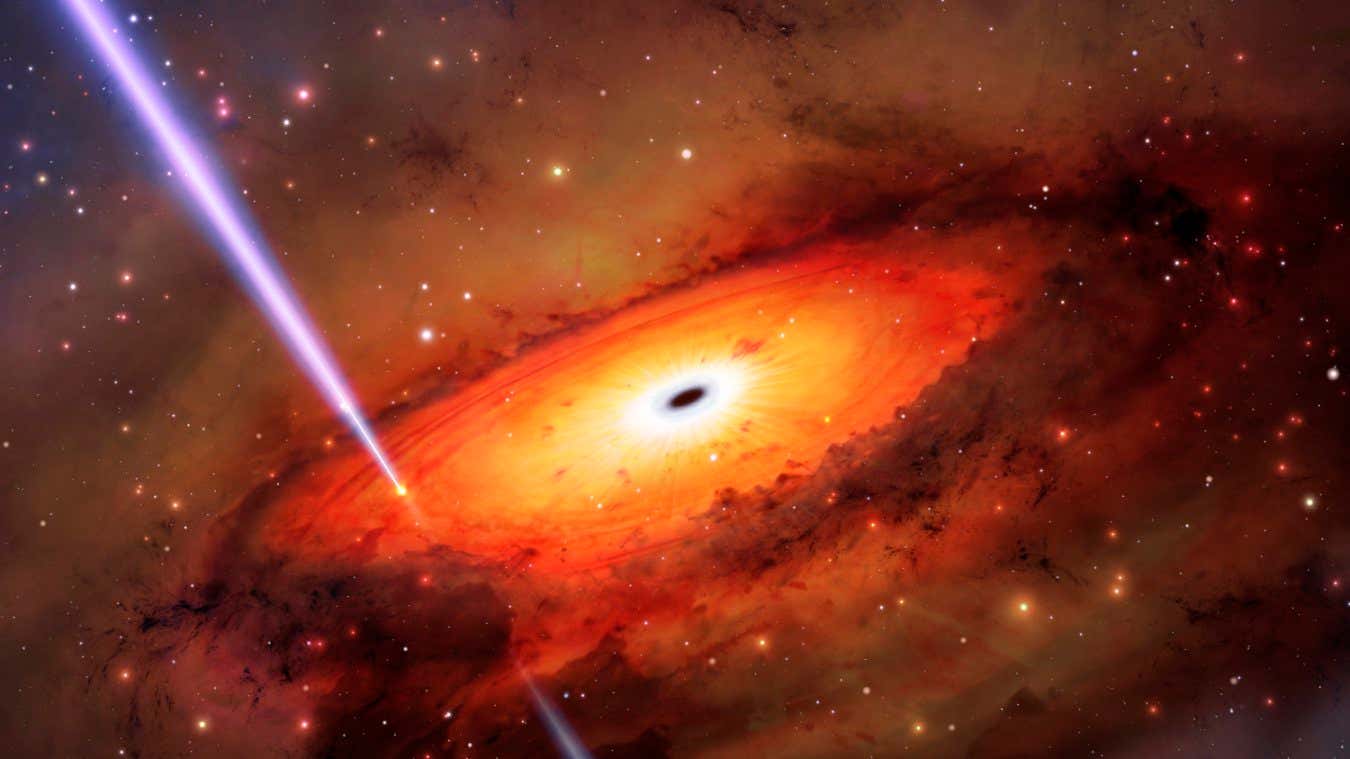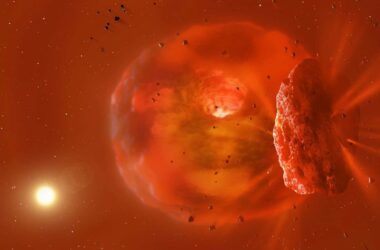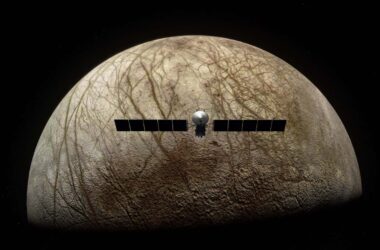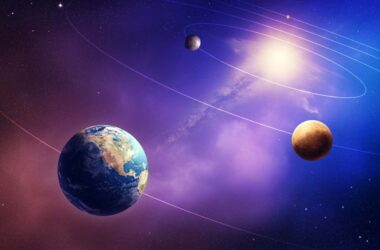Artist’s impression of a gamma ray burst that may have come from dead stars crashing into each other
International Gemini Observatory/NOIRLab/NSF/AURA/M. Garlick/M. Zamani
A perplexing gamma ray burst (GRB) has challenged our understanding of stellar collisions. Unlike other events of its kind, this GRB appears to have originated from the collision of two stars near the center of an old galaxy, deviating from the usual sources.
GRBs can be categorized into two types: short bursts that last 2 seconds or less, and long bursts. Long bursts are typically believed to occur when a massive star explodes in a supernova, while most short bursts are thought to be the result of binary neutron stars, extremely dense remnants of dead stars, colliding.
The GRB in question, named GRB191019A, was a long burst but seems to have originated from the collision of two deceased stars or possibly a star and a black hole.
Anya Nugent and her team at Northwestern University in Illinois analyzed data gathered from six observatories to investigate this powerful burst, which occurred in 2019 and lasted for just over a minute. They discovered that the burst originated near the center of a galaxy located approximately 3.3 billion light years away. However, there was no evidence of the expected supernova associated with a long GRB.
Supernovae are commonly observed in young, active galaxies, but this particular galaxy is extremely old. Most of its massive stars have already gone through their main life phases and transformed into neutron stars, white dwarfs, and black holes. Given that GRB191019A originated near the center of the galaxy where these remnants are abundant, the researchers concluded that the most likely scenario is a collision between two stellar corpses that resulted in the emission of this gamma ray burst.
Nugent explains that the observation of two stars colliding in this type of environment provides unprecedented evidence. She states, “With binary neutron stars, we think they’re born together, they die together, and eventually merge together. This is our first observational evidence that these stars weren’t born together: they were born, they died, and eventually in their death, they found each other.”
However, it remains a puzzle as to how such a stellar collision produced a full minute of radiation, which is longer than the brief flares observed in most short bursts.
“The idea that long GRBs could come from mergers is really confusing many astronomers. We still need to understand how we could be getting this much emission,” says Nugent. The team hopes that discovering more GRBs similar to this one could help unravel this mysterious phenomenon.








